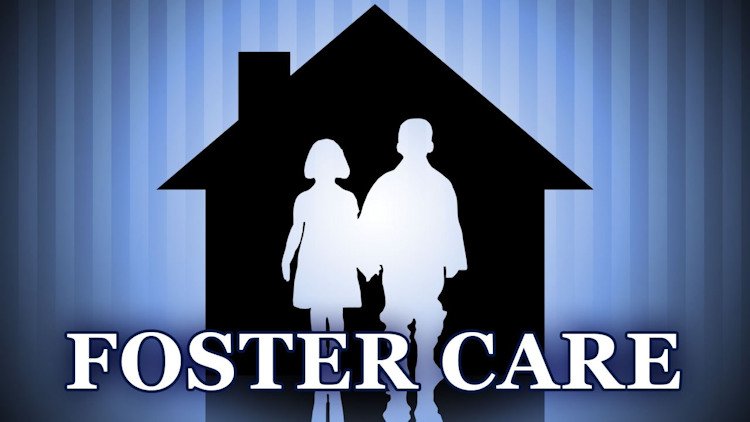Oregon DHS reports lowest number of children in foster care in 15 years

About 6,100 are in foster care, down 11% from previous year
SALEM, Ore. (KTVZ) -- Despite the challenges of the COVID-19 pandemic and historic wildfires, the Oregon Department of Human Services Child Welfare Division said Wednesday it was able to reduce the use of foster care to a historic low, return all children placed at out-of-state residential treatment facilities to Oregon and reduce the use of temporary lodging.
On Jan. 1, there were 6,118 children in foster care, the lowest number of children in care in 15 years.
“We all know that infants, children, adolescents and young adults do best growing up in a family that can provide love, support, lifelong learning, shared values and important memories,” said Child Welfare Director Rebecca Jones Gaston. “That is why we are committed to doing everything we can to provide the necessary supports to help families safely stay together and decrease the use of unnecessary foster care.”
Key Child Welfare Division data and accomplishments for 2020:
- Decreased the number of children in foster care by 11% compared to 2019.
- Eliminated the usage of out-of-state residential treatment facilities since July.
- Decreased the use of temporary lodging by 66% percent in the last 12 months. (Temporary lodging is the temporary placement of a child in a hotel room because there is not an appropriate placement immediately available. )
- Decreased the average wait times at the Oregon Child Abuse Hotline (ORCAH) by 46 percent from 8.07 minutes in 2019 to 4.33 minutes in 2020.
- Family reunifications in 2020: 1,934
- Adoptions finalized in 2020: 811
- Guardianships finalized in 2020: 355
Oregon Child Welfare Division Vision for Transformation
In 2020, the division began a series of discussions with its workforce, community partners, and Oregon Tribal Nations about what the division can and should do to support and preserve families and ensure that children in Oregon grow up in safe and loving homes.
What grew from these collaborative discussions was the Child Welfare Division Vision for Transformation. The vision brings a racial equity and anti-racism lens to every aspect of the work of the division and emphasizes that it will work to prevent maltreatment and the need for foster care, support families, and keep children in their homes whenever possible.
Support and training for foster providers is available statewide
As of Dec. 31, 2020, there were 1,344 foster providers enrolled in KEEP Fostering, a program for Oregon that went statewide in 2020. Available virtually, KEEP Fostering is an evidence-based support and skill enhancement program for foster and kinship parents. It offers culturally specific support for foster providers caring for Tribal children, LGBTQIA+ children, as well as support in Spanish and American Sign Language.
Family First Prevention Services Act in Oregon
Oregon’s Family First Prevention Services prevention plan was submitted to the United States Children's Bureau for review on Nov. 6, 2020. Learn more about Oregon’s prevention plan here. The prevention plan is the first step toward Oregon's goal of transforming the child welfare system to one that is prevention-oriented by providing supports and services to family before foster care is necessary.
Fatality Review and Prevention Efforts
The Fatality Prevention and Review Program was created in February 2020 to increase the independence and transparency of child safety and fatality reviews through the Critical Incident Review Team (CIRT) process. In 2020, 88 child fatalities were reported to the division and 34 of those cases met the criteria for a CIRT.
The CIRT conducts reviews into child fatalities when the victim, their siblings or other children living in the household have had previous interactions with the Child Welfare Division within 12 months of the fatality. The CIRT is focused on identifying whether any systemic issues contributed to the fatality and if so, how they can be addressed and corrected to prevent future fatalities.
Key safety and prevention initiatives implemented in 2020 included training related to suicide prevention, safe sleep for babies, and how to respond to chronic neglect for child welfare staff. Also, in 2020, the division joined the National Partnership for Child Safety, a collaborative group of leaders and critical incident review teams from 26 jurisdictions across the country with a mission to improve child safety and prevent child maltreatment fatalities.
How to support children and families in Oregon
Support children and families in Oregon by becoming a resource (foster) parent for children in foster care.
The MyNeighbOR program helps meet the essential needs of children, families, and young adults impacted by foster care. Learn how to provide support.
About the ODHS Child Welfare Division
The Oregon Department of Human Services, Child Welfare Division is committed to transforming itself to better support the individual needs of families and to best serve Oregon’s children and young people. Read the Child Welfare Division Vision for Transformation to learn more.
Report child abuse to the Oregon Child Abuse Hotline by calling 1-855-503-SAFE (7233). This toll-free number allows you to report abuse of any child or adult to the Oregon Department of Human Services, 24 hours a day, seven days a week and 365 days a year.